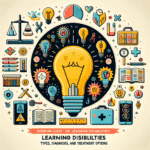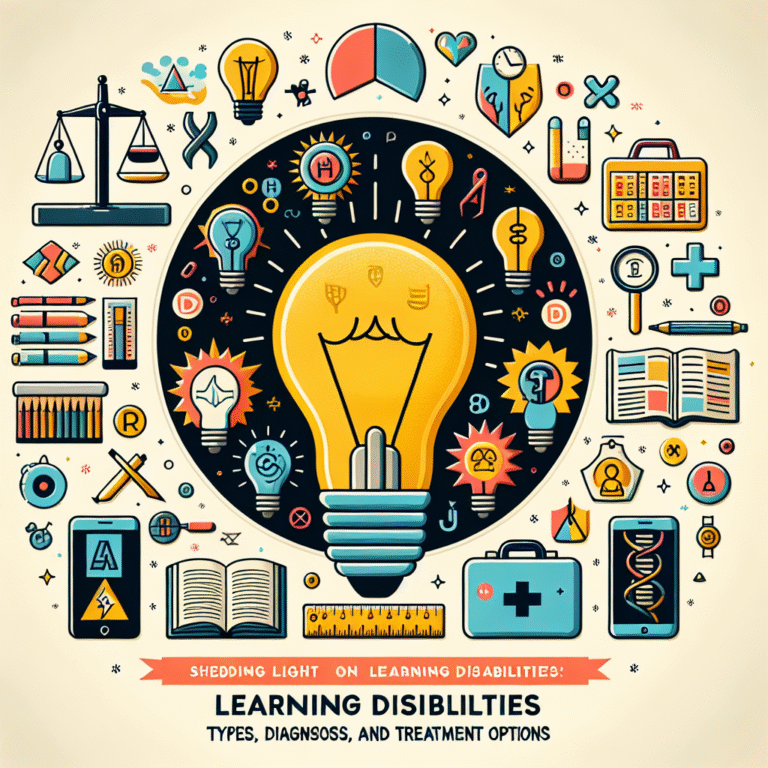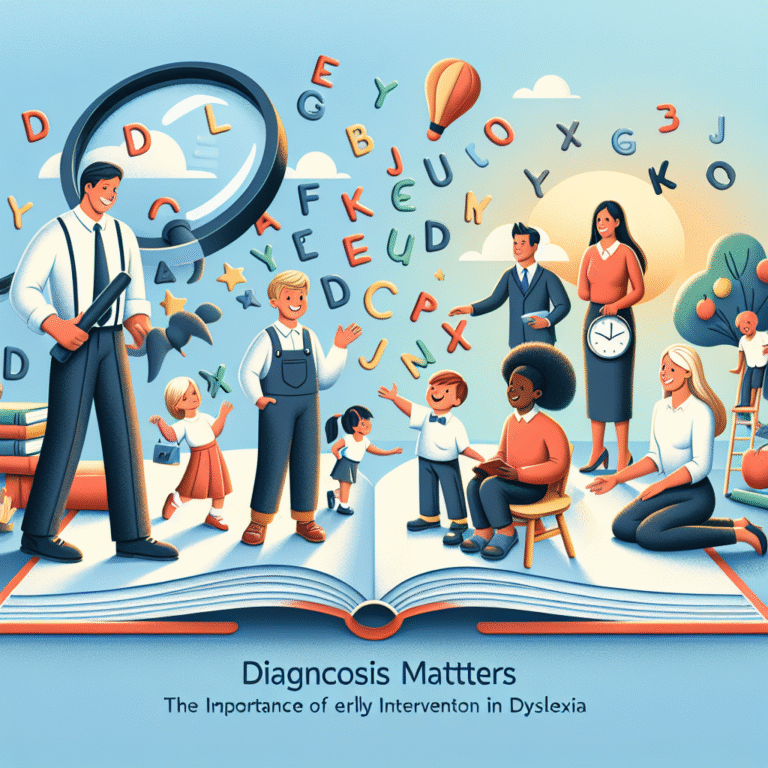
Little Red Flags: Early Warning Signs of Dyslexia in Early Childhood
Introduction
As parents, caregivers, and educators, we strive to provide every child with the most promising start to their educational journey. However, among the myriad challenges children may face, dyslexia often remains a silent struggle that can affect their confidence, learning, and overall development. In this comprehensive exploration of "Little Red Flags: Early Warning Signs of Dyslexia in Early Childhood," we will uncover the subtle but significant indicators that may suggest a child could be experiencing difficulties associated with dyslexia.
Dyslexia is not merely a reading issue; it is a complex neurological condition that affects language processing. Current estimates suggest that as many as 1 in 5 students may have dyslexic tendencies, yet many remain undiagnosed in their formative years. Recognizing the little red flags early in childhood can dramatically alter the trajectory of a child’s learning experience. By being vigilant, supportive, and informed, we can pave the way for successful interventions and a brighter future.
In this article, we will delve into the early warning signs of dyslexia, supported by engaging case studies, expert insights, and actionable strategies for parents and educators alike. By the end, you will be equipped with the knowledge to identify and address dyslexic traits as soon as they surface, ensuring every child has the opportunity to thrive.
Understanding Dyslexia: A Brief Overview
Before we explore the little red flags, it’s important to understand what dyslexia really is. Dyslexia is a specific learning disability characterized by difficulties with accurate and/or fluent word recognition, poor spelling, and decoding abilities. These challenges arise from a deficit in the phonological component of language, which often leads to secondary consequences in reading comprehension and overall academic performance.
Prevalence and Impact of Dyslexia
Researchers estimate that about 5-15% of the population has some form of dyslexia. This means that in a classroom of 25 students, it is possible for 1 to 5 children to experience these difficulties. The impact of undiagnosed dyslexia can ripple through a child’s educational and social experience, leading to low self-esteem, anxiety, and increased frustration.
Recognizing Early Red Flags in Childhood Development
Identifying the early signs of dyslexia often requires careful observation and a keen understanding of typical developmental milestones. Below, we highlight several crucial areas to consider when evaluating possible red flags.
1. Delayed Speech and Language Skills
One of the most telling red flags is a delay in speech and language development. Many children with dyslexia may begin speaking later than their peers or exhibit difficulty articulating words clearly. Parents should pay attention to these indicators:
- Limited vocabulary for age: By age 2, a typical child should have a vocabulary of 50-100 words, while children with dyslexia may struggle to reach these milestones.
- Difficulty completing nursery rhymes: By age 3, children often enjoy singing and can complete familiar phrases. A failure to do so may be indicative of underlying issues.
Case Study: Ben’s Speaking Journey
Ben, a vibrant 3-year-old, loved engaging with his colorful picture books. However, while his peers were stringing together sentences, Ben struggled with word retrieval and often resorted to pointing. His parents felt a twinge of concern but dismissed it as a late bloomer syndrome.
Through early intervention, Ben began working with a speech and language therapist. It turned out that his challenges were indeed related to early signs of dyslexia. This intervention not only helped him articulate his thoughts better but also improved his confidence significantly.
2. Challenges with Phonemic Awareness
Phonemic awareness refers to the ability to hear and manipulate sounds in words. Children typically develop this skill between ages 3-5. If a child shows signs of difficulty rhyming, blending sounds, or segmenting words, it can serve as a warning sign.
- Inability to identify rhyming words: A child who struggles to recognize that "cat," "bat," and "hat" share a similar sound may be facing challenges with phonemic awareness.
Chart: Phonemic Awareness Skills by Age
| Age | Expected Skills | Red Flags |
|---|---|---|
| 3 | Enjoys nursery rhymes; can say simple rhymes | Struggles with rhyming |
| 4 | Starts to blend sounds; can isolate sounds in words | Difficulty in blending sounds |
| 5 | Recognizes some letters and sounds | Trouble with sound-symbol matches |
3. Struggles with Reading Readiness
Reading readiness involves several components, including letter recognition, understanding that print carries meaning, and the ability to follow along in a story. Little red flags can emerge in this stage such as:
- Inability to recognize letters: By age 5, children should recognize at least some letters. A significant delay may indicate an underlying issue.
- Difficulty remembering sight words: Struggling to memorize common sight words can also be a telling sign.
Case Study: Emily’s Reading Roadblock
At age 6, Emily’s screen time was overshadowed by her peers’ discussions about new storybooks. Yet, despite her love for storytelling, Emily struggled to recognize the letters of the alphabet. Despite her enthusiasm for reading, her challenges became evident when she was unable to recognize even the most straightforward sight words. After an assessment, Emily was diagnosed with dyslexia, leading to tailored instruction. With the right tools, she not only improved her reading skills but also became one of the most enthusiastic readers in her class.
4. Writing Difficulties
Writing may also bring about early red flags. Children with dyslexia often face challenges when attempting to express themselves through writing. Indicators include:
- Difficulty holding a pencil and forming letters: While many children develop fine motor skills early, those with dyslexia might struggle more significantly.
- Spelling struggles: Children may consistently misspell familiar words or spell phonetically rather than correctly.
5. Parental and Teacher Observations
Finally, it’s vital to involve parents and teachers in the observation process. They can provide essential insights and feedback regarding a child’s behavior, learning patterns, and changes in attitude.
Real-World Application: Parent-Teacher Communication
The case of Daniel, a 7-year-old in second grade, exemplifies the need for communication. His teacher reported that he frequently became frustrated with reading assignments, while his mother noted that he would avoid homework at all costs, expressing feelings of worthlessness. A collaborative approach resulted in an early intervention plan that addressed both emotional and academic needs.
Conclusion: The Power of Early Detection
Dyslexia does not have to be a roadblock to educational success. The "little red flags" highlighted in this article provide essential insights for parents, educators, and caretakers to identify potential signs of dyslexia in early childhood. Early intervention strategies can make all the difference in a child’s academic journey.
If you notice a combination of these warning signs, it is vital to seek guidance from educational professionals. By working collaboratively, we can implement tailored strategies that foster better learning experiences and empower children to embrace their unique abilities.
FAQs
1. What should I do if I suspect my child has dyslexia?
If you observe any little red flags of dyslexia, it’s essential to speak with your child’s teacher or pediatrician for a formal evaluation. Early intervention is key for effective learning strategies.
2. Are there specific assessments for dyslexia?
Yes! Educational psychologists can conduct various assessments, including phonological processing tests, reading assessments, and writing evaluations to determine a child’s needs.
3. Can children outgrow dyslexia?
While children cannot outgrow dyslexia, many learn to adapt and develop coping strategies that allow them to succeed academically with the right support.
4. How can I support my child at home?
Engage in activities that promote phonemic awareness, such as rhyming games or sound matching exercises. Encourage open communication about their feelings and frustrations with reading.
5. Are there different types of dyslexia?
Yes, dyslexia can manifest in various forms, including phonological dyslexia (difficulty with sound processing), surface dyslexia (difficulty recognizing familiar words), and rapid naming dyslexia (difficulty with rapid information retrieval).
6. How can schools support children with dyslexia?
Schools can implement specific teaching strategies tailored to the needs of dyslexic students, including phonics-based reading programs, multisensory instruction, and individualized education plans (IEPs).
By being vigilant and responsive to the little red flags in children’s early development, we can create a strong foundation for learning and lead our children towards a fulfilling educational experience. Together, we have the power to turn potential struggles into success stories, illuminating the path for every child impacted by dyslexia.









